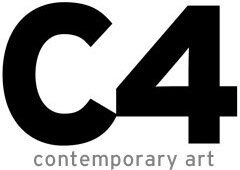Profile: Hiroshi Sugimoto
Affiliated Movements: Photography, Conceptual Art. *
Affiliated Artists:
Bernd & Hilla Becher
Thomas Demand
August Sander
Cindy Sherman
* The placement of other artists in the same category is purely for didactic purposes - any number alternate criteria could result in a different choice. This list is chosen by suggesting other artists, mostly working at the same point in time and whose work might evoke similar questions in the viewer.
|
 |
Sugimoto: A Finite Collapse of Time
| Known for his tenacious seriality and deeply machine-like work ethic, Hiroshi Sugimoto is known (predominantly) for his enigmatic long exposure recordings of seascapes and movie theatres. Working like a magician, using the deeper properties of the photographic medium, he is able to conjure scenography only previously imagined in subjects normally considered somewhat pedestrian. It is only the conceptual manipulation of subject and medium that he is able to create something truly quiet, yet shockingly resonant to the viewer of his works. Working always with time honored methods and materials (the large format camera with film, not to mention impeccable technique) Sugimoto has been tirelessly documenting his subjects (see below) since his exit from art school in the US since the mid-1970s. |
Movie Theatres
Throughout the mid to late 1970s and upwards, Hiroshi Sugimoto packed up a folding 4x5 camera & tripod, surreptitiously entered matinees (and, one can only presume, evening film events) and documented the interior of movie theatres across the United States - invoking a classic procedure borrowed from Conceptual Art. He would open the shutter just before the 'first light' hit the screen and close it after the credits finished rolling and before the house lights came on. Using this method he was able to invert the subject/object relationship of the movie theatre and use the film itself to illuminate the proscenium and interior. However - it's MORE than that, isn't it? There is also a social and political critique implicit to the gesture. The rendering of a 'blank' movie screen carries with it a whole series of alternate implications that are highly relevant to a culture of consumption. The unavoidable allusions of mass social programming and lack of content are implicit in the act. This content, largely unaddressed crtiically, is what lends the images their incredible power - along wtih the natural fascination of being made privy to the photography's divine birthright - allowing us to see the normall invisible - to experience a finite collapse of time.
|
|
Seascapes
Ever the romantic enthusisast of the photographic medium, the seascape series are testament to his ardor. While they are deeply 'photographic' they are also deeply metaphysical and existential documents. As a form and cultural construct they exist as the ultimate distilling of the form of photographic landscape. Perhaps this is a clue as to the intent of the artist. They are explorations of spiritual and physical boundary as much as an exploration of the phenomenology of the picture plane (an ongoing concern of his). The longer-exposed images, apparently exposed through a neutral-density filter (permitting him to expose for an artiificially long duration) distinguish themselves from their shorter counterparts. The existence of both within the larger series is enigmatic. Waves and other features which would otherwise be erased by the passing of only several seconds are revealed in some though not others. To me, this begs an interesting question - though it seems likely to me that the depth of this desire for control does not extend so deeply- more likely that there are elements in these works that he leaves to chance - much as he leaves the exposure of the negative in the movie theatre series as a function of the general luminosity of the film genre being viewed.
|
|
Drive-In Theatres
This category and oeuvre of Sugimoto's should be considered a close variant of his 'movie theatre' work and very likely subject to the same exploratory tools as the 'movie theatre' works. Individually, the works exhibit uniquely different characteristics, dependent upon the specificities of location - but this argument certainly applies to the 'movie theatres' as well. The subject-object reversal inherent in the movie theatre series should be considered here further complicated by the presence of sky, which introduces an aspect of the seascape series in the reading of the works.
|
 |
|
Architectural Icons
Towards the year 2000, Sugimoto became interested in the architectural iconography - well, not in the traditonal sense, but in the iconography OF architecture – he became interested in architectural monuments, we can say. It seems an prudent to imagine that he studied the characteristics of traditonal architectural photography in depth (Ezra Stoller, et. al.) and became interested in the removal of the most critical layer of information gathering from this particular genre, which is texture and detail. The even defocusing of the scene suggests that this is an alteration which was made in the darkroom, rather than in the camera. One wonders if this is the result of an afterthought or the original intent. Clearly - in the removal of this layer, the memorialization of the architectural icon is deepened. The subject becomes allied with the melancholy snapshots in the family album from a century before. Sugimoto makes use of the phenomenon to heighten this drama. While interesting, the result is nowhere near so resonant as the seascapes or theatre pieces.
|
 |
|



